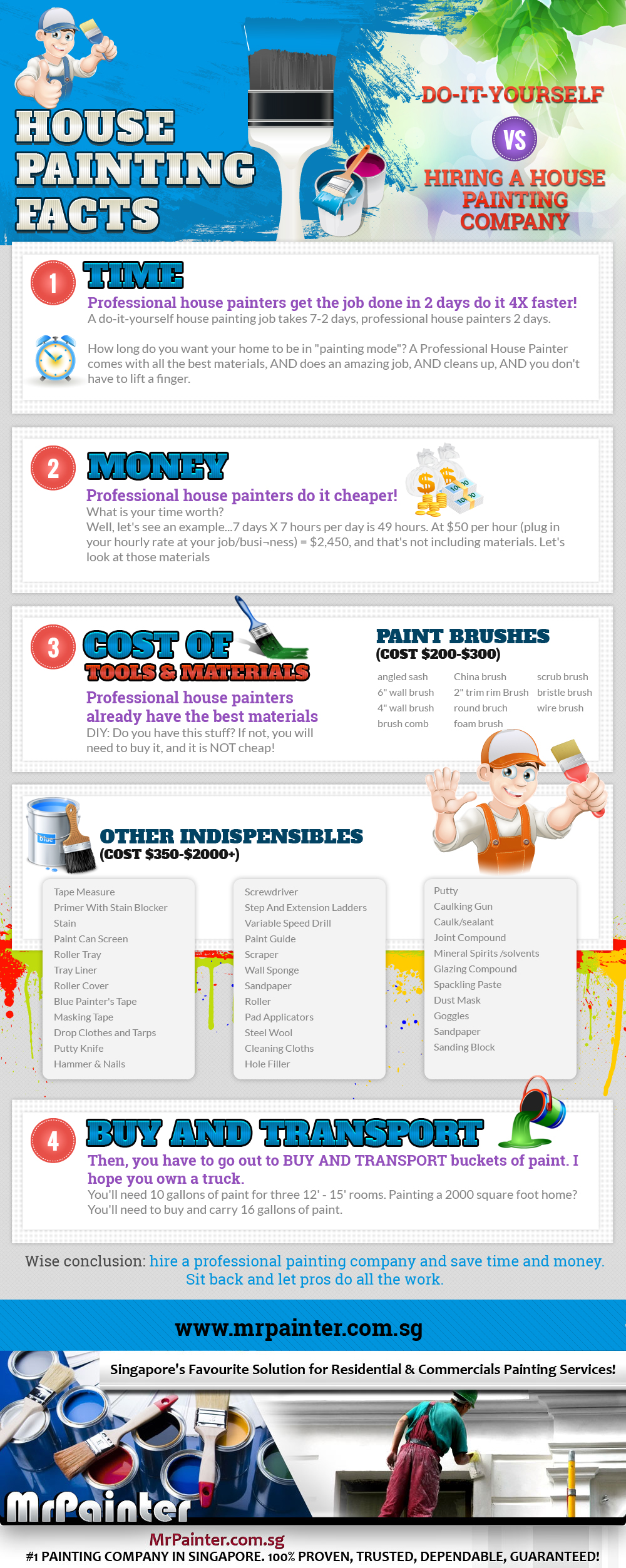The Impact Of Climate Condition On Industrial Outside Painting: Key Factors To Consider
The Impact Of Climate Condition On Industrial Outside Painting: Key Factors To Consider
Blog Article
Content Produce By-Beasley Kidd
When you're intending an industrial external paint job, do not ignore the impact of weather condition on your outcomes. You require to think about elements like temperature level, humidity, and precipitation, as they can make or break your paint job. As an example, did you recognize that optimal problems require particular temperature level arrays and humidity degrees? Stopping working to keep a & e painting on these aspects can cause unequal surfaces or perhaps damages to fresh paint. Comprehending these aspects is crucial to achieving a durable, professional result. So, what certain weather should you watch out for?
Temperature level Considerations
When it comes to commercial exterior paint, temperature plays a vital role in the outcome of your task. If you're repainting in severe warmth, the paint can dry out as well promptly, causing concerns like inadequate adhesion and irregular surfaces. You intend to aim for temperature levels between 50 ° F and 85 ° F for the best results. Below 50 ° F, paint may not treat appropriately, while over 85 ° F, you take the chance of blistering and fracturing.
Timing your job with the appropriate temperatures is important. Begin your work early in the early morning or later in the mid-day when it's cooler, particularly during hot months.
Likewise, consider the surface temperature level; it can be considerably greater than the air temperature level, especially on sunny days. Utilize a surface thermostat to check this before you start.
If temperatures are uncertain, watch on the weather report. Sudden temperature level decreases or heat waves can hinder your plans. You do not want to begin repainting only to have the conditions alter mid-project.
Humidity Degrees
Humidity degrees significantly influence the success of your industrial external painting project. When the humidity is too high, it can impede paint drying out and curing, causing a variety of problems like inadequate adhesion and end up top quality.
If you're planning a work during wet conditions, you may find that the paint takes longer to completely dry, which can prolong your job timeline and increase expenses.
Conversely, low moisture can likewise present difficulties. Paint might dry as well rapidly, preventing appropriate application and leading to an uneven coating.
You'll wish to check the moisture levels closely to guarantee you're working within the ideal range, commonly in between 40% and 70%.
To obtain the most effective results, consider making use of a hygrometer to determine moisture prior to starting your job.
If you locate the levels are outside the optimal range, you may require to readjust your timetable or choose paints developed for variable conditions.
Always consult the maker's guidelines for particular referrals on humidity tolerance.
Precipitation Effect
Rainfall or snow can dramatically interrupt your business exterior painting plans. When rainfall happens, it can remove fresh used paint or produce an irregular finish. Preferably, you want to choose days with completely dry weather condition to make certain the paint adheres effectively and cures efficiently. If you're caught in a shower, it's best to halt the project and await problems to enhance.
Furthermore, snow can be a lot more harmful. Not only does it produce a wet surface area, but it can also decrease temperature levels, making it difficult for paint to dry. This can lead to concerns like peeling or blistering down the line.
https://www.boston25news.com/news/local/boston-artist-home-painting-again-after-lengthy-coronavirus-battle/M5ADRHBA4JBE5EVLSERMNP6OSI/ to examine the weather forecast before beginning your job. If rain or snow is predicted, take into consideration rescheduling.
Constantly remember to permit sufficient drying out time between coats, especially if the weather continues to be uncertain.
Verdict
Finally, watching on the weather condition is essential for an effective industrial external paint job. By keeping an eye on temperature, humidity, and precipitation, you can make sure the best problems for application and healing. Bear in mind to plan your work around favorable weather and constantly adhere to supplier standards. With the ideal approach, you'll achieve a long-lasting, lovely surface that can hold up against the components. Don't let the weather condition capture you off-guard-- stay informed and paint wise!
